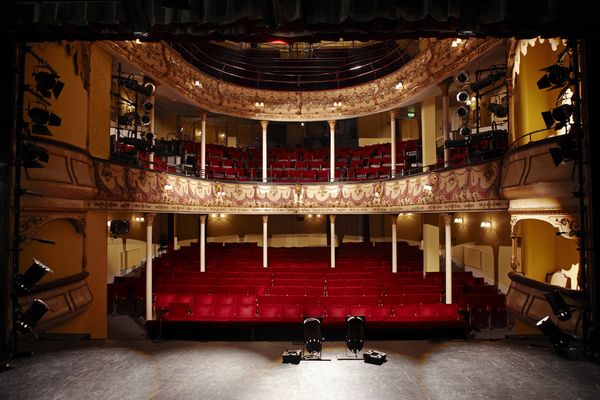7.2.1
Introduction
Introduction
Introduction
Miller’s stagecraft was heavily influenced by the Realist movement of the late 19th and early 20th Centuries and other playwrights such as such as Anton Chekhov and Henrik Ibsen.


Influences
Influences
- Miller’s stagecraft was heavily influenced by the Realist (or Naturalist) movement of the late 19th and early 20th Centuries which sought to re-establish the theatre’s links to the real world after a period where drama had confined itself to the fantastical.


Other playwrights
Other playwrights
- Miller followed the examples of playwrights such as Anton Chekhov (1860-1804) and Henrik Ibsen (1828-1906) whose drama foregrounded social and psychological realism, looking to capture real life on stage through plot, dialogue, acting, stage design, costume, props etc.


All My Sons (1947)
All My Sons (1947)
- Miller’s first success, All My Sons (1947), is written purely in the realist or naturalist tradition.
1Introduction
1.1Introductions
2Act One
3Act Two
4Extended Passage Analysis
5Character Profiles
5.1Willy & Linda Loman
5.2Biff & Happy Loman
5.3Other Characters
6Key Themes
7Writing Techniques
7.1Structure
7.3Expressionism
8Historical Context
8.1Historical Context
9Literary Context
9.1Tragedy
10Critical Debates
10.1Introduction
10.2The Marxist Reading
10.3The Feminist Reading
10.4The Eco-Critical Reading
10.5Other Debates
11Recap: Main Quotes
11.1Characters Quotes
11.2Quotes by Act
11.2.1Act One: Key Events 1-3 Quotes
11.2.2Act One: Key Events 4-6 Quotes
11.2.3Act One: Key Events 7-9 Quotes
11.2.4Act One: Key Events 10-12 Quotes
11.2.5Act One: Stage Direction Quotes
11.2.6Act One: The Woman Quotes
11.2.7Act Two: Key Events 1-2 Quotes
11.2.8Act Two: Key Events 3-4 Quotes
11.2.9Act Two: Key Events 5-6 Quotes
11.2.10Act Two: Key Events 7-8 Quotes
11.2.11Act Two: Key Events 9-10 Quotes
11.2.12Act Two: Howard's Office Quotes
11.2.13Act Two: The Requiem Quotes
Jump to other topics
1Introduction
1.1Introductions
2Act One
3Act Two
4Extended Passage Analysis
5Character Profiles
5.1Willy & Linda Loman
5.2Biff & Happy Loman
5.3Other Characters
6Key Themes
7Writing Techniques
7.1Structure
7.3Expressionism
8Historical Context
8.1Historical Context
9Literary Context
9.1Tragedy
10Critical Debates
10.1Introduction
10.2The Marxist Reading
10.3The Feminist Reading
10.4The Eco-Critical Reading
10.5Other Debates
11Recap: Main Quotes
11.1Characters Quotes
11.2Quotes by Act
11.2.1Act One: Key Events 1-3 Quotes
11.2.2Act One: Key Events 4-6 Quotes
11.2.3Act One: Key Events 7-9 Quotes
11.2.4Act One: Key Events 10-12 Quotes
11.2.5Act One: Stage Direction Quotes
11.2.6Act One: The Woman Quotes
11.2.7Act Two: Key Events 1-2 Quotes
11.2.8Act Two: Key Events 3-4 Quotes
11.2.9Act Two: Key Events 5-6 Quotes
11.2.10Act Two: Key Events 7-8 Quotes
11.2.11Act Two: Key Events 9-10 Quotes
11.2.12Act Two: Howard's Office Quotes
11.2.13Act Two: The Requiem Quotes
Unlock your full potential with Seneca Premium
Unlimited access to 10,000+ open-ended exam questions
Mini-mock exams based on your study history
Unlock 800+ premium courses & e-books